Matador Network's Blog, page 938
January 21, 2020
Drunk yoga retreat in Cancun

Alcohol might sound like an unnatural third-wheel to astrology and yoga, but hey, exercise is a little easier when you’re buzzed. And if you’re an astrology skeptic, getting drunk might be exactly what you need to start believing in zodiac signs and birth charts. Eli Walker, certified astrologer (yes, that’s a thing) and founder of Drunk Yoga, partnered with the CheapCaribbean online travel agency to create a “New Year, Do You Retreat” at the Haven Riviera Cancun Resort & Spa from February 20 to 23, blending drunk yoga and astrology.
The trip includes yoga while sipping cocktails, one-on-one birth chart readings by Walker, meditation classes, character development workshops, a copy of Walker’s book, and cocktails from her curated menu.

Photo: Drunk Yoga/Facebook
According to Walker, the retreat is designed for people who “aren’t quite ready to take the plunge into a full 10-day vegan yoga and meditation retreat/cleanse, but are ready to dive a little deeper into understanding themselves and their relationship to the universe in a fun, pressure-free environment.”
The retreat starts at $899 per person, and includes all flights, accommodations, and activities.
It might sound like a steep price tag just to have someone tell you that “this is your year,” but that’s between you and your zodiac sign. 

More like this: 10 must-haves for the traveling yogi
The post This wellness retreat in Cancun combines drunk yoga and astrology appeared first on Matador Network.

January 20, 2020
Manchester, England, LGBTQ guide

While Brighton takes the crown for being the gay capital of the UK, Manchester proudly holds the title as the gay capital of the north, acting as one of Britain’s most liberal and accepting cities. With an abundance of queer nightlife options, intense weekend-long events, and the campest drag scene in England, it’s easy to see why people from all over the UK flock to the north. Manchester acts as a safe haven for queer travelers, with niche locations that cater to everyone in the LGBTQ community.
LGBTQ History
Manchester’s LGBTQ scene began to thrive publically as early as the 1800s, when “fancy dress” balls allowed individuals to dress up as the opposite sex, creating a space to explore gender identity while surrounded by like-minded people. These events were often secretive, however, as anti-cross-dressing laws created tension between the police and the queer community. On a fruitful night in 1880, 47 men were arrested after attending a fancy dress ball in Temperance Hall, their charges being soliciting and enticing each other to commit “improper actions.”
More awareness for the community occurred in 1940 when the Union Pub (now named New Union) hosted drag nights to entertain US soldiers during World War II, attracting a sizable LGBTQ clientele while doing so. Despite this, gay clubs within the city remained secretive and hidden away for a long time, often found on desolate side streets and with inconspicuous signs. It wasn’t until 1990 that Manto opened its doors, the first gay club to be transparent about what it was: a gay club. Large, plate-glass windows acted as a political and social statement to bring awareness to the LGBTQ community, allowing passersby to view the inner goings of the pub. As a result, numerous more LGBTQ venues and safe spaces appeared along Rochdale Canal, eventually forming Manchester’s famous gay village: Canal Street.
Along the way, a number of activist groups and organizations began to station themselves within the city. The first arose in 1973 under the name The Manchester Gay Alliance. Originated by the Lesbian and Gay society at Manchester University, the organization provided resources for those in the LGBTQ community, including a switchboard people could call for advice and support. Following in its footsteps, the Manchester city council created the Equal Opportunity Committee in 1984, which paved the way for the first pride parade just a year later.
Manchester today
Nowadays, Manchester is at the forefront of queer acceptance in the UK and home to a large and proud LGBTQ community. Pride flags decorate the city’s streets, hanging from hotels, waving proudly outside bars, and interlaced within colorful street murals. And while the entire city is rainbow-centric throughout the entire year, pride season is the time that Manchester truly comes alive. More on that later.
Politically, Manchester is extremely liberal and protective of its thriving LGBTQ community. In 2003, the city council’s LGBTQ staff group was established, protecting LGBTQ rights within the workplace — as a result of this, the Stonewall Organization labeled Manchester’s city council as one of the top 100 employers for workplace equality. And recently, as of 2016, the city’s first openly gay mayor, Carl Austin-Behan, was elected.
Canal Street and Gay Village

Photo: Chris Allan/Shutterstock
It is undeniable that Manchester is famous for its active gay nightlife, and at the heart of it all is the notorious Canal Street. This prosperous gay village is the epicenter of all things queer in Manchester, with over 40 LGBTQ venues scattered along the Rochdale Canal.
While the nightlife options along Canal Street are like no other, Manchester is also home to an abundance of alternative safe spaces. Within the LGBTQ community, safe spaces are often found in alcohol-based venues, such as clubs and bars — and as much as a big ole’ gay night out can be piles of fun, it isn’t for everyone. For those who don’t drink and those who are too young to, Canal Street has a bounty of other queer-focused locations available, such as venues for queer youth to meet and explore their identity and events celebrating activism and gay literature.
Bars, nightclubs, and drag shows
Cruz 101
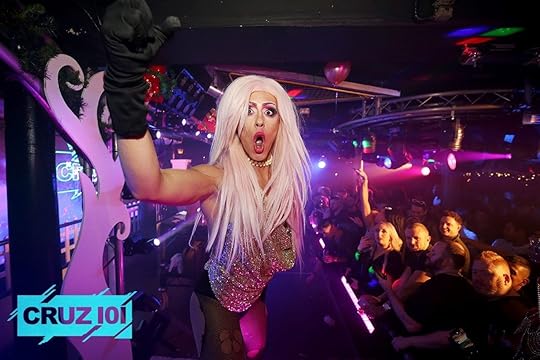
Photo: Cruz 101 Manchester/Facebook
Originally opening its doors in 1992, Cruz 101 is one of Manchester’s oldest and most popular gay bars. Initially, attendees would have to apply for membership 48 hours prior to their visit to be granted legal access to the club. That soon changed, however, after a lengthy court battle resulted in instant membership being permitted at the door. This ruling acted as a monumental moment for queer nightlife within Manchester, paving the way for more gay bars to open up along Rochdale Canal.
Nowadays, the lively club is split up into two levels: the main floor and Sub101. On the main floor, you’ll find crowds dancing away to cutting-edge house and dance music. Sub101 is located on the lower level, providing a more “underground” feel. When not operating as a part of the main club, Sub101 hosts special events, so check out the site to see what’s on.
Where: 101 Princess Street, M16DD
Vanilla
Vanilla is one of the only gay clubs in Manchester that caters specifically to lesbians, and it is one of the most famous lesbian bars in the entire country. From the outside, Vanilla may present as normal British pub — on the inside, however, you’ll find a strong LGBTQ community and allies dancing away to modern chart music.
Where: 39-41 Richmond Street, M13WB
Kiki
With its rainbow, light-up dance floor, energetic live DJs keeping the mood alive, and 25 disco balls glittering from the ceiling, Kiki has a reputation of being the life of the party on Canal Street. The high-energy ambiance and cheap drink deals result in a packed bar until doors close. Be sure to check out the weekly schedule as fierce drag queens frequent this popular venue, acting as entertainment, bartenders, and DJs.
Where: 4 Canal Street, M13HE
Bar Pop
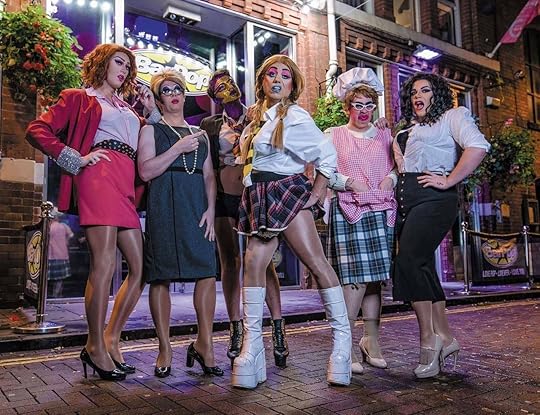
Photo: Bar Pop/Facebook
Manchester is well-renowned for its flamboyant drag scene, and Bar Pop is the shiny star of all things drag within the city. On Saturdays, performances are held on the lower level by some of Manchester’s most notorious local queens, such as Annabelle Lector and Robbin Banks. Throughout the week, Bar Pop has a busy schedule jam-packed with events, with live viewing parties for the UK edition of Rupaul’s Drag Race, comedy nights, and lively afterparties.
Where: 10 Canal Street, M13EZ
Oscars
Oscars is Manchester’s most notorious underground hotspot, where you’ll find locals sipping away on colorful cocktails and relishing in the jazzy ambiance. The entire cocktail bar has a classic Hollywood feel, with glittering black marble decorating the walls and old-timey musicals playing on the surrounding screens. Be sure to check out the event schedule as Oscars frequently host live performances, including drag queens, pianists, and vocalists.
Where: 34 Canal Street, M13WD
G-A-Y
A night out in Manchester can easily continue into the early morning, with bars keeping their doors open until the sun comes out, and G-A-Y is certainly no exception. Known as the club that never sleeps, G-A-Y is open seven days a week and sports long opening hours, only closing a short eight hours a day. With themed party nights, lively drag queen performances, and rowdy bingo nights with cash prices, be sure to check out their event calendar before your visit to know what you’re getting yourself in for.
Where: 63 Richmond Street, M13WB
Restaurants and cafes
The Molly House
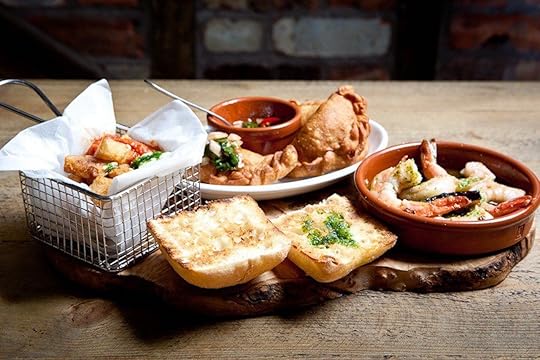
Photo: The Molly House/Facebook
Located within Manchester’s prolific Gay Village, The Molly House allows folk to relax in a traditional shabby-chic pub setting, all while nibbling on fresh South American and Spanish tapas. The main pub room specializes in scrumptious food, local beers, and bitter ales — though, for a more stereotypical British experience, the conjoined tea room is home to 23 different varieties of Britain’s most signature beverage: steaming mugs of tea.
Where: 26 Richmond Street, M13NB
Sidney Street Cafe
Located within Europe’s first purpose-built LGBTQ Centre, the charming Sidney Street Cafe provides customers with an abundance of healthy vegetarian and vegan food options. Don’t expect a fruity cocktail or local beer on the menu, though, as the cafe — and center — prides itself on being a non-alcohol safe space for the LGBTQ community. Within the connecting LGBTQ center, alcohol anonymous meetings are held weekly, alongside other social support groups for minorities such as lesbian immigrants and queer people of color.
Where: 49-51 Sidney Street, M17HB
Museums and landmarks
Alan Turing Memorial
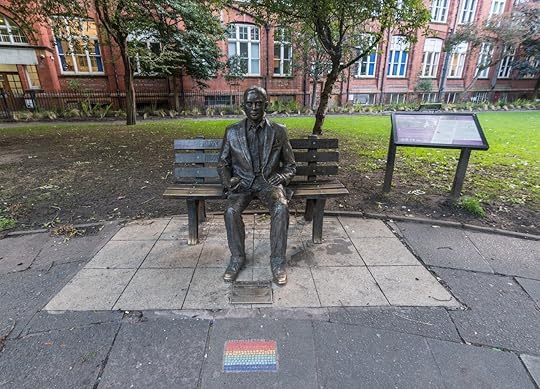
Photo: amirraizat/Shutterstock
Known as the father of theoretical computer science, Alan Turing was an English mathematician, computer scientist, and philosopher. During his highly accomplished life, he constructed the Turing machine (one of the world’s first general-purpose computer models) and sped up the process of cracking German codes in World War II. Basically, Turing was one smart guy.
In 1952, he was prosecuted for being in a relationship with another man, his punishment being chemical castration. Later, in 1954, he committed suicide. A memorial in Turing’s honor can be found in Sackville Park, often covered from head to toe in flowers.
Where: Sackville Park
People’s History Museum: LGBT Collections
As the national museum of democracy, the People’s History Museum is not solely LGBTQ focused, though it is home to a vast collection of LGBTQ historical documents. Within the exhibits focused on queer representation, you’ll have to chance to examine articles from the press regarding queer liberation, posters from the Outrage! Organization, and leaflets from the Lesbians and Gays Support the Miners group.
Where: New Ct Street, M33ER
Events
Sparkle
Transgender individuals from all over the UK parade into Manchester in July to enjoy the national transgender celebration, the world’s largest annual free-to-attend celebration of gender identity. During the weekend’s festivities, Manchester’s iconic Canal Street comes alive with pride, with entertainment provided by trans and non-binary artists, live DJs, and a stocked bar. For those who are struggling with their gender identity, local support groups and charities are present to provide advice and assistance.
Where: Canal Street
Gay Pride Festival
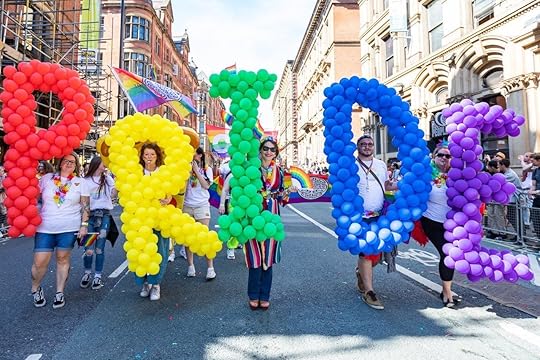
Photo: Manchester Pride/Facebook
First held in 1985, Manchester Pride quickly became one of the most iconic and popular pride events in Britain. During Pride weekend, you’ll struggle to find a corner of this thriving city not filled to the brim with rainbow flags, shimmering glitter, and flamboyant Brits living their best gay life. With everything from live musical performances from world-famous stars, to local drag queens strutting their stuff, it’s no wonder that Manchester Pride attracts countless queer travelers each year. Held in August, the festivities begin on Friday and end on Monday, with the notorious parade taking place on Saturday.
2019 was the year controversy hit Manchester Pride as ticket prices increased over 100% compared to the previous year, soaring from $36 to $84. Blame for the drastic price change was placed on the event organizers for wanting to transform gay pride into a festival event and for hiring better-known stars, such as Ariana Grande, to headline. Many members of the LGBTQ community decided to boycott the event as they believed the fundamental purpose of pride was being forgotten and in protest of the capitalization of the LGBTQ community for monetary gain.
Where: Canal Street
Great British Bear Bash
Held during the May Bank Holiday weekend, the Great British Bear Bash sees Manchester’s iconic Canal Street taken over by larger than life, hairy, and bushy-bearded gay men. The bash, running since 1998, aims to bring together the bearded and beard-loving for a weekend full of hairy fun. As the event progresses, attendees can expect pool parties, canal cruises, bar crawls, and social meet-ups. The Man Bears, the organization behind the event, host a similar — though smaller — event named Pre-HiBEARnation in early November each year.
Where: Canal Street
Accommodations
Velvet
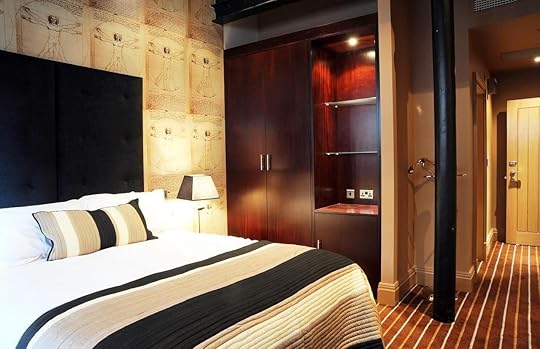
Photo: Velvet Hotel, Restaurant and Bar/Facebook
Found in the heart of Manchester’s thriving gay village, this award-winning hotel is in close proximity to some of Manchester’s most popular nightlife, being only a short walk away from G-A-Y, Vanilla, and Kiki. Home to high-class rooms and a glamorous bar down below, Velvet provides queer travelers the chance to rest from their busy schedules, all while having Manchester’s fruitful gay village on their doorstep.
Where: 2 Canal Street, M13HE
New Union Guest House
Not many hotels in Manchester can advertise that they played a key role in Manchester’s queer history, though the notorious New Union can proudly say that it has. During World War II, US soldiers arrived in droves to watch drag shows hosted in this quaint pub. The sleek and modern guest houses are located a floor above the thriving establishment, allowing travelers to sleep (and party) where queer history was made.
Where: 111 Princess Street, M16JB 

More like this: The ultimate LGBTQ guide to Los Angeles
The post The ultimate LGBTQ guide to Manchester, England appeared first on Matador Network.

Traditional art in Beijing, China

Traditional Chinese art tends to be associated with watercolor mountainscapes or inky calligraphy, but with a 3,000-year-old history, China has a huge array of artistic traditions. While the earliest of Chinese arts included painting, calligraphy, and bronze work, subsequent centuries would see the development of ornate jade sculptures and glazed pottery and ceramics. Beijing, being the home of the emperor, attracted the finest artisans from across the country to pamper the imperial family. The palatial arts grew to include intricate silk embroidery, inlaid filigree, ivory carving, and carved lacquer.
While the imperial court relished in the most opulent of furnishings, everyday Beijingers developed their own iconic folk arts, such as paper cutting, figurines made out of a flour-based clay, or “inside painting” — tiny paintings on the inside of snuff boxes. Whether you’re moved by the elegant minimalism of calligraphy or awed by the painstaking details of cloisonné, these are the best places in Beijing to marvel at traditional Chinese art.
1. Liulichang Street

Photo: claudio zaccherini/Shutterstock
Liulichang was once the site for a venerable glaze kiln that made tiles for palaces and temples during the Yuan and Ming dynasties. For a while afterward, the area was a well-known spot to buy antiques and curios, but recently, the 2,600-foot-long stretch is an emporium for traditional art galleries and supplies. An estimated 200 galleries and stores, with giant sheep hair paint brushes dangling outside their windows, can be found on this creative street.
As an art supply locality, you can also find intricately carved inkstands (used for mixing paints) and jade stamps that serve as artist signatures. If you’re looking to take something home with you, stores will custom engrave a jade stamp, or you can pick out a decorated snuff bottle with your zodiac animal. Liulichang is also a great place to see art in action — artisans are often working on painted fans and snuff boxes on the premises.
Where: Liulichang Street, Xicheng District, Beijing
2. Wangfujing Art & Craft Emporium

Photo: testing/Shutterstock
On Wangfujing, Beijing’s main commercial street, you’ll find an entire mall dedicated to the fine arts. The mall was founded in 1954 by the Chinese government and as such was given the status of “recognized cultural heritage” store. Many of the grandmasters of the fine arts sell their work here, there are cloisonné vases the size of a human, elaborate hand-embroidered illustrations, and delicate inlaid filigree touched off with precious gemstones.
The bottom floor sells gold jewelry, as well as Beijing Olympic mementos, while the traditional arts are on the second, third, and fourth floors. The top floors sell silk textiles. Since the Wangfujing Art Emporium promises quality at a prime location, expect some inflated prices.
Where: 200 Wangfujing Street, Dongcheng District
3. Baigongfang

Photo: Unique Vision/Shutterstock
Literally translated as “hundred crafts house,” this space was opened by the Chinese government in an effort to preserve China’s rich artistic heritage in a modernized capitalist economy. Baigongfang is probably the best place to see masters at work as many of the 30 or so storefronts also serve as workshops. Ateliers specialize in traditional arts and crafts such as intricate paper cuttings, clay dioramas, inside painting, engraved lacquer, wood and ivory carvings, and cloisonné to name a few. The building also hosts demonstrations and workshops on the third floor, and the fourth floor has a large exhibition on silk. Visitors can see live demonstrations of the production process and purchase garments to take home.
Address: 2 Zuo’anmen Inner Street, Dongcheng District
4. The Forbidden City

Photo: LIUSHENGFILM/Shutterstock
The Forbidden City, also known as the Palace Museum, is a massive building complex that housed the imperial family during the Ming and Qing Dynasties. Along with its stately red and gold architecture, the Forbidden City has a whopping collection of a million historical relics. Aspects of this colossal collection are housed in frequently changing exhibitions, but the permanent Treasure Gallery is the most worthwhile stop. The exhibition has the finest of antique ornaments that would have adorned the royal family’s homes, such as gold enamelware inlaid with precious gems, opulent pieces of cloisonné, gargantuan jade sculptures, and jewelry worn by empresses.
Where: 4 Jingshan Front Street, Dongcheng District
5. Beijing Capital Museum

Photo: TK Kurikawa/Shutterstock
The Beijing Capital Museum is the place to go to be acquainted with Beijing’s history, culture, and folk life. The Bronze Exhibition Hall houses a large collection of jade, bronze, calligraphy, and paintings on each floor, and the main exhibition hall is home to porcelain items and other relics. On the top floor, visitors can step into traditional Beijing’s folk life and see many crafts, such as Peking opera ornaments, dioramas made out of flour clay, lanterns, or paper crafts. The museum is free to visit and is not very frequented, so you’ll have plenty of space to explore and enjoy.
Where:16 Fuxingmen Outer Street, Xicheng District
6. National Museum of China

Photo: Sean K/Shutterstock
Adjacent to Tiananmen Square, the National Museum of China is a 16-acre behemoth housing ancient artifacts from across the country. Like the Palace Museum, the national museum has a collection of over one million items and claims to be the second most-visited museum in the world after the Louvre.
Sculptures in the main hall have a stoic, nationalistic feel while upstairs exhibition rooms have a variety of temporary exhibits ranging from ancient stone carvings to contemporary art. Probably the most noteworthy of the permanent exhibitions is the Ancient China collection that displays thousand-year-old bronze cauldrons, ancient money, and ancient jade sculptures. Visitors can also see the evolution of ceramics beginning around 2,000 years ago, as well as exhibitions showcasing ancient pottery and Buddhist artwork.
Where: 16 East Chang’an Avenue, Dongcheng District
7. Panjiayuan Antique Market

Photo: Farris Noorzali/Shutterstock
Panjiayuan Antique Market has stall after stall of what sellers claim to be authentic antique ceramics, cloisonné, jewelry, and curios. If you’re not looking specifically for antiques, the market also has vintage books and posters, wooden furniture, jewelry, precious stones, ethnic clothing, paintings, and large stone carvings in case you needed to decorate your own palace. More formal stores around the market will sell pricier, better-quality items, while anything goes at the stalls — if you know how to barter you can buy souvenirs at a cheap price. The market is open every day, but go on a weekend to catch more vendors.
Address: Chaoyang District
8. National Art Museum of China

Photo: cherry-hai/Shutterstock
The National Art Museum of China, or NAMOC, has a huge collection of Chinese arts, from ancient to contemporary, imperial to folk. With six floors and 21 exhibition halls, it’s a great introduction to all aspects of Chinese life, from learning about the communist revolution through oil painting to celebrating folk life via whimsical paper cut-outs. Notable permanent exhibitions showcase traditional Chinese paintings, oil paintings, sculpture, prints, pottery, and puppetry. NAMOC also hosts many changing exhibitions.
Where: 1 Wusi Street, Dongcheng District
9. Xu beihong Memorial Hall

Photo: Marina Wang
When in China, look out for murals of black watercolor stallions adorning the sides of buildings and popular squares. These murals are a nod to Xu BeiHong, probably the most revered painter in Chinese history.
The artist is best known for combining traditional techniques with Western composition to create paintings symbolic of a modernized China. Xu BeiHong was a huge proponent of art education and was the first president of the Central Academy of Fine Arts. Having studied oil painting in France for over a decade, he demonstrates a complete mastery of his craft as he can fluently move between different styles.
Following his death in 1953, Xu BeiHong’s family donated a large collection of his work to the Xubeihong Memorial Hall. Upper floors exhibit his better-known works of traditional Chinese paintings while the lower flows showcase the depth of his talent with oil paintings, portraits, sketches, and nationalistic works.
Where: 53 Xinjiekou North Street, Xicheng District 

More like this: The ultimate guide to spending one day in Beijing’s Forbidden City
The post The best places in Beijing to marvel at traditional Chinese art appeared first on Matador Network.

January 17, 2020
African American museum in DC

The time spent inside the National Museum of African American History and Culture in Washington, DC, will be heavy on your soul no matter your origin, but please don’t shy away from visiting. NMAAHC represents the complexity and suffering of blackness in North America and cherishes the achievements of African Americans, who built the nation with their bare hands.
For generations, African natives and, later on, African Americans have been, to borrow a phrase from one of the galleries, “making a way out of no way.” You will witness the path from slavery to the civil rights movement to Black Lives Matter, beholding the thriving culture amid racial oppression.
Museum curators tell us there’s no correct way to see the 12 exhibitions comprised among 3,500 objects and 183 videos, but they advise that it’s difficult to accomplish in one visit. Since we know you may not have an entire three-day weekend to dedicate to the museum, we visited it multiple times to create this guide on how best to navigate 600 years of dense, important history.
Metaphoric architecture
History galleries: From slavery to the election of America’s first African American president
Suggested stops in the history galleries in C3, C2, and C1
The L galleries: African American community and culture
Planning your visit
Discussions and events
Metaphoric architecture

Photo: BrianPIrwin/Shutterstock
The 400,000-square-foot bronze-hued building adjacent to the Washington Monument sets the atmosphere for the historical truth that many have long waited to witness. The establishment of the museum right on the National Mall is also emblematic since The Mall is a platform for America’s democratic values of liberty, equality, and justice.
Award-winning architect David Adjaye designed the three-tiered exterior in the form of a corona, inspired by the Yoruban caryatids, West Africa’s crowned wooden statues. The patterns on the aluminum panels portray the 19th-century ironwork of enslaved craftsmen in New Orleans. They also allow for the daylight to shine through and, at night, for the corona to glow from within.
The perimeter of the grand porch on the south (National Mall) entrance is symbolically bedded out with live oaks, the trees of safety, strength, and resilience. For the enslaved, live oaks provided shade and shelter and served as gathering spots for meetings and religious services.
History galleries: From slavery to the election of America’s first African American president

Photo: National Museum of African American History and Culture/AlanKarchmer
Upon entering the trio of history galleries, you are embarking on the journey of 3.5 million West Africans who endured the savage disregard of their humanity and the journey of their descendants. Note that some of the more brutal photographs in the history galleries have been curated so that visitors can avoid looking at them head-on.
You are directed in front of the heavy doors of a large elevator, which will open to a glass box when about 30 people gather. Some visitors will look behind at the escalators, puzzled about why they are not in use, but the elevator is a well-curated illusion of time travel. From the light and open space of the 21st century, you will descend three levels below ground to the darkness and confinement of the 1400s.
At the end of this section, we note some must-see items in each concourse.
Concourse 3 (C3)
This area tells the story of how, by the 1600s, West Africa’s centers of learning, military prowess, trade, and unity became the settlements of slave barracks. The sounds of musicians and dancers were silenced by “the rattling of chains, groans, and cries.” There’s much to learn in this first gallery about the transatlantic slave trade, the largest forced migration in history.
The startling emergence of the high-ceilinged Paradox of Liberty hall allows for a deep breath and the intuitive release of tension. But the view of Thomas Jefferson’s statue in the foreground of a brick wall with the names of his 600 slaves reminds visitors that there’s still a lot of history left until the 13th Amendment of 1865, which proclaimed that “neither slavery nor involuntary servitude, except as a punishment for crime… shall exist within the United States…”
Concourse 2 (C2)
Walk up the ramp to reach a new mournful era in African American history: that of racial segregation (1876-1968) as enforced by the Jim Crow laws. Concourse 2 showcases the dehumanizing forms that the “separate but equal” doctrine took in public facilities, transportation, education, housing, entertainment, healthcare, work, and the military.
The spoken word played an explicit role in the modern civil rights movement, which has a dedicated room in this gallery. In this room, you can pay tribute to Martin Luther King Jr., whose leadership of non-violent protests against the unequal treatment of African Americans, activism, and intelligence helped pass the Civil Rights Act of 1964.
Concourse 1 (C1)
Climb the second ramp to this concourse to encounter the events of a changing America. In 1968, an unprecedented boom of black movements took place, each displayed on bright orange and mirror plaques. While milling about this pop hall, anticipation for the future is gradually restored under jazz and rock and roll sounds. The alley of three decades, from the 1980s to the 2000s, leads you toward the end of the history galleries, which amount to 60 percent of the museum.
Suggested stops in the history galleries in C3, C2, and C1

Photo: National Museum of African American History and Culture
It would be unfair to rank one exhibit as more important than another since each is a piece of the puzzle that constitutes America. If you have only a few hours at your disposal, though, the following exhibits are a must-see for every visitor who wishes to connect the dots of history, note the remarkable progress, and aspire to go further forward.
Set of shackles (C3)
These heavily rusted iron loops joined together by an iron rod have been recovered among many artifacts from the São José shipwreck off the coast of Cape Town.
The wall of the domestic slave trade (C3)
As a result of the expansion of cotton cultivation, about “one million people were taken away from their families to vast plantations along the Mississippi River Valley.” Read their testimonies on the wall.
Stone slave auction block (C3)
Get a glimpse at this large gray carved marble with a flattened top and bottom, used in Hagerstown, Maryland, during 1830.
Silk lace and linen shawl given to Harriet Tubman by Queen Victoria (C3)
Harriet Tubman escaped slavery as a young woman in the early 1800s but returned to the South again and again to lead other African Americans to freedom.
Violin played by the enslaved man Jesse Burke (C3)
The violin belonged to Elijah Burke, owner of the Mount Pleasant Plantation in Phillips County, Arkansas. Before he died in 1860, he gave the violin to one of his enslaved men, Mr. Jesse Burke, who used to entertain the slaveholder and his guests.
Cabin from the Point of Pines Plantation in South Carolina (C3)
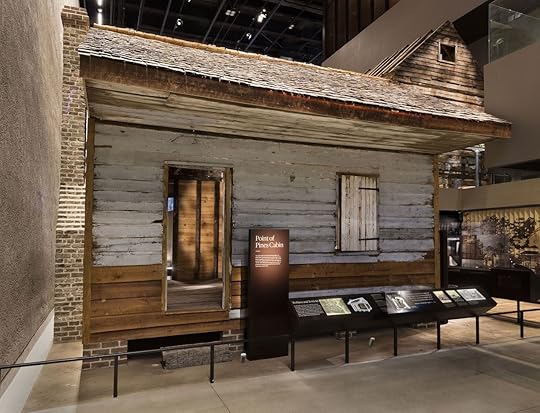
Photo: National Museum of African American History and Culture/EricLong
After emancipation, many African Americans returned to the plantations to find work and moved into the same cabins they occupied during slavery.
Interactive lunch counter (C2)
Inspired by college students’ bravery at a segregated Woolworth’s department store eatery, the lunch counter is an installation of interactive touch screens facing a panoramic news footage projection of the fights for equality. Sit on any of the counter stools and explore the menu of movements, from sit-ins to bus boycotts. This intriguing experience puts you in the shoes of freedom fighters. Even if you have to line up for one of the 12 stations, it’s definitely worth your time.
Segregated railroad car (C2)
This is one of the largest and most iconic exhibits demonstrating the brutal impacts of segregation under the Jim Crow era. Enter the car to witness the challenges African Americans faced during their travels around the country.
Angola Prison Tower (C2)
Sitting on a raised platform is a life-sized steel and concrete tower from one of America’s most brutal prisons.
Emmett Till Memorial (C2)
The casket of 14-year-old Emmett Till, who was murdered while visiting family in Mississippi in 1955 after whistling at a white woman is “one of our most sacred objects,” said Kinshasha Holman Conwill, the museum’s deputy director. The casket is placed on a pedestal in a separate room, and there’s a bench for those who wish to engage deeply with the significance of the exhibit. The young boy’s murder became a rallying point for the Civil Rights Movement.
The Oprah Winfrey Show exhibit (C1)
Oprah Winfrey is the first African American to host a national show, which aired for 25 years. This exhibit is a reproduction of the setting with original furniture and objects.
Dress designed by Tracy Reese and worn by Michelle Obama (C1)
Here the tour of the history galleries ends with the election of America’s first black president. In the foreground of the many magazine covers and other memorabilia from the political campaign is the signature sleeveless black dress with red poppies that the First Lady wore in 2013 on the 50th Anniversary of the March on Washington.
The Contemplative Court

Photo: National Museum of African American History and Culture/AlanKarchmer
If you have walked through all of the history galleries, you have covered more than one mile. Noting that the concourse galleries are very cramped, and the only (and small) seating areas are in the designated “Reflections” spaces, the Contemplative Court is a well-thought addition to the museum’s symbolic and practical achievements. It is a virtual transition from the dark past to the future.
The calming effect of the water that falls powerfully and uninterruptedly from an oculus on the ceiling in the center of the room brings the catharsis you have been looking for after acknowledging your role in history. But at the end of the day, it is a shared history. A quote by Dr. Martin Luther King Jr. on the wall across reads, “We are determined to work and fight until justice rains down like water and righteousness like a mighty stream.”
The L galleries: African American community and culture

Photo: National Museum of African American History and Culture/AlanKarchmer
L3 community galleries
In comparison to the history galleries, the L galleries are bright, airy, and spacious. From the heritage hall, take the escalators to community galleries. In the “Making a Way Out of No Way” exhibits, you’ll see how African Americans have resisted and persisted, thanks to mutual support and through education, religion, entrepreneurship, and activism.
There are plenty of personal success stories here to discover in spite of all the obstacles and lack of opportunity. Stories include those of Dr. Mary McLeod Bethune, who founded the National Council of Negro Women in 1935, and photojournalist Charles Harris, whose work now sits in the Carnegie Museum of Art. One room is dedicated to boxer and activist Muhammad Ali, whose “stand for his personal, political, and religious convictions changed American history,” reads the display on yellow background.

Photo: National Museum of African American History and Culture/AlanKarchmer
The chronological exploration of African American activism that began in the concourse exhibitions continues here through participation in sports with memorabilia — such as Michael Jordan’s jersey, Joe Louis’s boxing gloves, and Gabby Douglas’s bar grips — and the statues of Venus and Serena Williams. Besides manifesting their physical ability and talent, many athletes used the fields, courts, and rings as a platform for social and political justice and equality.
In the Power of Place room, an interactive multimedia table features personal stories on identity. Migration, displacement, and travel are matters that touch communities globally, and this is a great opportunity to reflect on those. If you are running out of time, but you feel inspired, you can submit your story and images online.
If you have time and want to pay respects to the African American soldiers who served in the military from the American Revolution to the War on Terror, visit the Double Victory exhibition on L3.

Photo: National Museum of African American History and Culture/AlanKarchmer
L4 culture galleries
This area welcomes you with an impressive multimedia installation named “Cultural Expressions,” which focuses on style, cuisine, creativity, language, and dance.
The musical crossroads hall — where you can see Sammy Davis Jr.’s tap shoes, Jimi Hendrix’s vest, and Chuck Berry’s red Cadillac — takes you through multiple genres of African American music. The speakers are on blast, and it’s very likely to see visitors moving to the beats of Chuck Berry, 2Pac, or Whitney Houston. You have just joined a party celebrating one of America’s most important cultural exports: music.
Visual arts enthusiasts should leave themselves time to visit the dedicated gallery on L4. Paintings, sculptures, and drawings show how artists interpreted the history of their nation from the beginning of the 19th century to contemporary times.
L2 Explore More!
If you are not on a time crunch, visit the gallery to explore interactively more stories, images, and objects from the museum’s vast collection. This open space will capture the attention of all ages and is appealing to younger kids.
Planning your visit

Photo: National Museum of African American History and Culture/AlanKarchmer
Although the museum opened in 2016, it remains a compelling attraction, so be prepared for large crowds all year. From September to February, you can walk in on weekdays, but weekend visits require a timed-entry pass. Passes for future visits are issued on the first Wednesday of the month; weekends, you can also go online and try for same-day timed passes, which are released at 6:30 AM on Saturday and Sunday.
During the March to August peak season, advance and same-day timed passes are required for entry to the museum before 1:00 PM on weekdays and at any time on weekends. Like all Smithsonian museums, walk-in entry and passes are free of charge. Opening hours are 10:00 AM to 5:30 PM, seven days a week throughout the year except December 25.
While food and drink are prohibited in the galleries, make time for lunch or a snack at the Sweet Home Café opposite the Contemplative Court. You may want to leave time at the end of your visit to peruse the admirable collection of African American literature in the museum store. (While the store stays open until 5:30 PM, the last entrance is at 5:00 PM.)
Grab a museum map from the information desk when you enter. For more in depth guidance, download the museum’s mobile app — free WiFi is available on all levels.
Discussions and events

Photo: Pamela Au/Shutterstock
Today, the museum engages in contemporary conversations about black life in America, and in the past years, it has documented and curated items from the Black Lives Matter movement. Kobe Bryant, James LeBron, Michael Jordan, and Oprah Winfrey are among the museum’s big-league donors.
The museum has a busy calendar with discussions, reading sessions, live music, screenings, and workshops. On Monday, January 20, 2020, the National Museum of African American History and Culture is commemorating the legacy of Martin Luther King Jr. and celebrating his great dream for America and the world. 

More like this: How to crush the British Museum in one day
The post How to see the National Museum of African American History and Culture in a day appeared first on Matador Network.

History of Irish Coffees
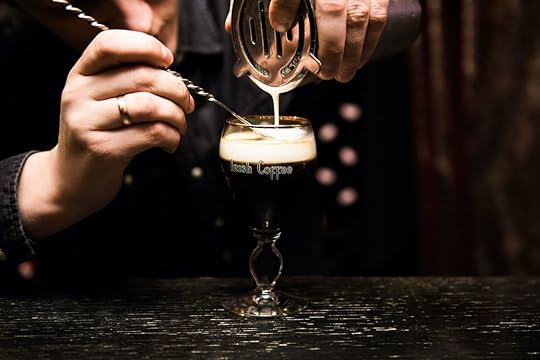
There’s a connotation that mixing alcohol with your caffeinated beverage of choice means you want a way to stay up partying all night. Blame Four Loko and the folks behind the Red Bull Vodka for that. Long before the advent of either of these drinks, however, there was the Irish Coffee, traditionally made as a welcome drink for weary travelers rather than a tonic to keep you awake at the club.
The Irish Coffee, unlike a Oaxacan Old Fashioned or Moscow Mule, actually comes from the country the drink is named after. Few cocktail origin stories are as detailed and elaborate as the one for the Irish Coffee.
It all starts with Joe Sheridan, a chef and bartender who worked at the Foynes Boat terminal near Limerick. It was a popular take-off spot for flying boats (airplanes that took off and landed in water). Flying boats were popular at the time for their size, though they were also prone to weather delays because the planes had to fly at a low elevation. On a fateful day in 1943, a Pan Am flight headed to North America from Foynes was forced to turn back. Sheridan greeted the spurned travelers with hot food and drinks, including cups of coffee spiked with Irish whiskey and topped with cream. A passenger asked if the coffee was Brazilian, so the story goes, and Sheridan joked that, no, it was Irish coffee (obviously, no coffee trees grow in Ireland).
Foynes made the Irish Coffee its traditional welcome drink after that flight, and it quickly became popular among of the many passengers, including celebrities, who flew through. Ireland was a neutral nation during World War II, making Foynes a relatively safe entry point to Europe from the Americas. Famous Americans like Bob Hope, Bing Crosby, John F. Kennedy, and Marilyn Monroe, who flew through the country on their way to entertain the troops in Europe, all got their first taste of the drink at Foynes. When the airport moved to nearby Shannon, the welcome drink (and the staff) moved as well.
American travel to Ireland continued after the war, as did the fascination with the Irish Coffee. In a December 1945 travel story for Washington DC’s Evening Star, writer I. William Hill wrote about the “Irish or Gaelic coffee — a delectable combination of one part Irish whisky, two parts hot coffee, with a touch of sugar and topped by a good half inch of thick double cream.” Drinking one would make you “as good-natured as any Irishman,” he wrote.

Photo: Wollertz/Shutterstock
The push to bring true Irish Coffees to America started in 1952. The owner of the San Francisco bar Buena Vista, Jack Keoppler, asked award-winning travel writer Stanton Delaplane to help make Irish Coffees as good as those served at Shannon Airport. Delaplane had written about the drink in the past, and the two tried to recreate it to no avail. There wasn’t a published recipe for the cocktail, and two Americans’ attempts were off balance with too much coffee, too much sugar, or too much whiskey (or, worse, the wrong type of whiskey).
Delaplane gave up, but Keoppler took his passion project to Ireland to learn from the source. He also got some advice from San Francisco’s mayor at the time, Elmer Robinson, who told Keoppler to use 48-hour-old cream (as opposed to fresh) to make sure the head of the drink was the right frothy consistency. Finally, when all else failed, Koeppler hired Joe Sheridan, the creator himself, as a bartender at Buena Vista.
Buena Vista has perhaps the most famous stateside Irish Coffee, but by 1957, the drink had spread. National papers were writing that the Irish Coffee was “the newest American favorite for holiday get-togethers.” The recipe was poetically described as, “Cream, rich as an Irish brogue, coffee, strong as a friendly hand, sugar, sweet as the tongue of a rogue, and Irish whiskey, smooth as the wit of the land.”
Today, the Irish Coffee is just as much, if not more, loved in the US as it is in Ireland. Here, bars compete for the most Irish Coffees sold in one day (Prohibition in Savannah: 2223) and various versions of the drink (often bad for anyone who’s tried a good one) can be found in Irish pubs across the country. Unfortunately, the latter is the case for most Irish Coffees in the US, says Jillian Vose, beverage director at New York City’s Dead Rabbit.
There are a lot of things that can go wrong. The glass should hold exactly six ounces, only one ounce of whiskey should be added (never use anything but Irish whiskey — Dead Rabbit goes with Bushmills Original for its maltiness), the coffee should be naturally sweetened, and crappy whipped cream from a canister should never — never — be used.
“I can’t say that I have had many great-tasting Irish Coffees anywhere outside our bar to be honest, especially in Ireland,” Vose says. “Maybe that’s why our Irish tourists can be especially skeptical of trying one and why our staff know to make sure they get to try it before they leave, giving them hope!”
Irish Coffee culture in Ireland
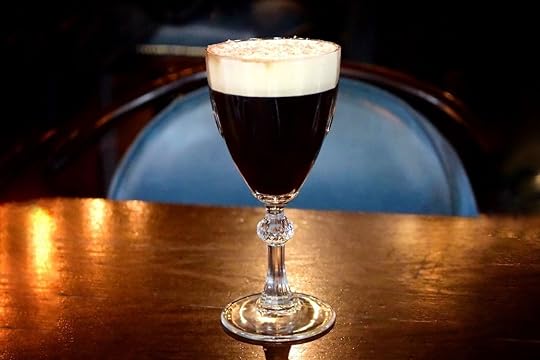
Photo: Nickolaus Hines
“Irish coffees are popular in Ireland among the Irish, sure,” says Grace McKeever, an Irish writer who has tended bar in the country. “I say popular loosely, since it’s not like we’re guzzling coffee and booze at the rate we drink Guinness, or even whisky sans the caffeine for that matter. But it’s popular for what it is — a spiked dessert digestif.”
It’s typically drunk, McKeever says, on celebrations like Christmas. Irish coffees can also be found around Ireland at restaurants and “the typical ‘old man’ pub we boast so many of.”
Though it makes some of the world’s most famous whiskey, Ireland has always been first and foremost a beer-drinking country, a representative from Powers Irish Whiskey told me on a recent visit to Dublin. It’s also more of a tea-drinking nation than coffee, though that’s slowly changing. These two factors are part of the reason why the lion’s share of Irish Coffee drinking in the capital has been left to tourists.
“It is very popular with tourists here, certainly more so than among locals, and there are several pubs in Dublin that promote the fact they serve it,” says Ray Commins, an Irish content editor at the walking tour company freetour.com who is based in Dublin. “Generally, these pubs would count tourist footfall as a big percentage of trade, so appealing to a tourist’s perception that it is a quintessentially Irish thing to do suits their agenda — but it is drank by locals on occasion too!”
Commins adds that Irish Coffee is primarily for cold winters and late sessions when you’ve had a pint or two too many at the pub and are feeling a bit groggy.
My personal experience with Irish Coffees in Ireland was much in line with McKeever’s and Commins’s impression. The best one (which quickly turned into two) I had in Dublin was at The Oak.
Where to drink Irish Coffees in Dublin: The Oak, 1-3 Parliament St, Temple Bar, Dublin 2, D02 AN28, Ireland
Irish Coffee culture in the United States

Photo: Dead Rabbit NYC/Facebook
Americans are known for stealing, then subsequently changing, the food and drink of other countries. Irish Coffee is no exception.
The perfect example can be found on Reddit’s r/ireland. In 2019, a user posted a photo of an Irish Coffee with the caption, “We have had many Guinness abominations, what about Irish coffee?” It featured Powers Three Swallow single pot whiskey next to a glass mug of muddy coffee topped with what appears to be Reddi-wip. The comments ranged from mortified to resignation.
“Jesus wept is that fucking whipped cream out of a can?” One poster commented, adding, “Do the yanks have no shame at all?”
For the most part, the answer, at least when it comes to Irish Coffees, is no. I’ve had an embarrassing number of Irish Coffees in Irish-themed pubs that could pass for sweet coffee milk. The US original at Buena Vista is very tasty and worth a try — after all these years it’s still the main draw to the bar. My favorite, and admittedly the only Irish Coffee I’ve ever ordered at the same place more than once, is from New York City’s Dead Rabbit.
“[The Irish Coffee is] our signature drink and is served in all the bars,” Vose says. “We would definitely encourage tourists and first-time guests to try one, however, as they’ve probably never had a good one.”
Where to drink Irish Coffees in the United States: The Buena Vista, 2765 Hyde St, San Francisco, CA 94109 & Dead Rabbit, 30 Water St, New York, NY 10004

More like this: The best non-touristy pubs in Dublin to drink at instead of Temple Bar

The post The difference between Irish Coffee in Ireland and the United States appeared first on Matador Network.

The best comedy clubs in Boston

Big surprise that the city that gave us Conan O’Brien, Bill Burr, and Patrice O’Neal has a wickedly good comedy scene. Countless comedic geniuses have honed their craft on Boston’s stages, from local-legend regulars who launched from the city’s stand-up clubs to now-famous theater kids who spent their college days moonlighting at improv venues. Nothing warms the soul during dreary winters or keeps things fresh and cool during muggy summers quite like laughter. No matter the season, escape Boston’s notoriously trying weather at these hilarious hotspots.
1. Improv Asylum

Photo: Improv Asylum/Facebook
In-the-know comedy fans are probably familiar with New York City’s Improv Asylum, but the venue’s owners started out bringing laughs to Boston. The original location is still going strong with mixed improv and sketch performances on the main stage every Thursday, Friday, and Saturday, plus weekly events like Raunch, which promises wild adults-only improv. You may also catch a special event like the Tight Five, a showcase that gives solo performers free rein for five minutes each. Minutes from Paul Revere’s House, there’s no better place to wind down after a day of North End sightseeing than Improv Asylum.
Where: 216 Hanover Street, Boston, MA 02113
2. Laugh Boston

Photo: Laugh Boston/Facebook
The self-proclaimed sister club of Improv Asylum, Laugh Boston offers a mix of local acts and big-name comedians who travel the country to perform at this 300-seat venue. Stand-up is the name of the game here, so come prepared to see well-crafted jokes by performers who know their stuff. Head to the lobby of the Seaport District’s Westin Boston Waterfront hotel for a drink, snack, and guaranteed laugh. Should you find yourself inspired to get into the comedy game, you can even learn from the pros by signing up for a class with the affiliated Laugh University.
Where: 425 Summer Street, Boston, MA 02210
3. The Wilbur Theatre

Photo: Wangkun Jia/Shutterstock
The Wilbur Theatre is a long-running music venue and comedy club in Boston that books the headliners you’ve always wanted to see. Comedians like Tig Notaro, Norm Macdonald, and Joe Rogan have all shot specials here recently, and others like Nikki Glaser, Tracy Morgan, and Colin Jost are scheduled to perform this year. Check the calendar to see who’s playing when you’re in town, smack in the middle of Boston’s historic Theatre District, whether as part of a national tour, comedy festival, or regular stand-up show.
Where: 246 Tremont Street, Boston, MA 02116
4. ImprovBoston

Photo: ImprovBoston/Facebook
ImprovBoston is one of few comedy venues you can count on for all-ages shows, perfect for a wholesome group outing. Saturday afternoons are devoted to the Family Show, which even lets the little ones hop on stage and participate. After the sun goes down, the main theater is dedicated to mixed-bag sets of everything from quick-witted improv games to on-the-spot sketches. A separate studio theater welcomes stand-ups and other comedic performers, while both theaters host late-night sets between Wednesday and Sunday.
Where: 40 Prospect Street, Cambridge MA 02139
5. Nick’s Comedy Stop

Photo: Nick’s Comedy Stop/Facebook
Proudly named the best venue in the city in 2018 by Boston Magazine, Nick’s Comedy Stop has been hosting top local talent and touring A-listers since 1977. The location is great, sandwiched between Boston Common and Chinatown, making it an ideal choice for a date night. Plus, tickets are reasonably priced and there’s no drink minimum, though you’re welcome to hit the full bar if you’re feeling a night on the town. Nick’s is also available for private events and offers group rates for bachelor and bachelorette parties.
Where: 100 Warrenton Street, Boston, MA 02116
6. The Comedy Studio

Photo: The Comedy Studio/Facebook
Just outside of Boston proper, Somerville has turned into a legitimate nightlife destination over the past decade. Alongside its speakeasies and indie venues, you’ll find The Comedy Studio, which recently relocated to Union Square from neighboring Cambridge. The venue puts a new spin on old classics, both with the performers it brings and the comedy they’re likely to perform. Stop by to see newcomers and old pros alike polishing their newest material.
Where: 1 Bow Market Way #23, Somerville, Ma 02143
7. The Rockwell

Photo: The Rockwell/Facebook
The Rockwell is a performing arts venue in Somerville that’s made a name for itself as a stop on greater Boston’s comedy circuit. Don’t expect nightly, or even weekly, comedy shows here, but do keep an eye on the calendar as you won’t want to miss hilarious events like sketch-comedy blowout Somerville Night Live and Shit-faced Shakespeare, which invites classically trained actors to stage the Bard’s classic plays with the addition of one absolutely hammered cast member, a change of comedic pace that’s guaranteed to get you laughing.
Where: 255 Elm Street, Somerville, MA 02144 

More like this: The 9 best music venues in Boston to catch a live show
The post The 7 most hilarious venues in Boston to have a laugh appeared first on Matador Network.

Old lady rescues base jumper

A base jumper wound up in a sticky situation recently when he base-jumped off a high-rise apartment building in Acapulco, Mexico. The jump went badly, and the jumper, Kody Kosloski, ended up crashing into the side of the building and dangling helplessly just above one of the apartment’s balconies. Luckily for him, this old woman was there to save the day.
The Michigan-based daredevil was filming the whole thing with a camera mounted to his helmet, so the thrilling jump, unfortunate crash, and sweet rescue were all caught on tape. After Kosloski jumped and released his parachute, an unlucky gust of wind took him right toward the building, where he scrambled to get his bearings. Caught up on a balcony, he caught the attention of the old lady below, who came to the rescue.
“I see you,” she said, pulling him by the hand to safety.
She then offered him a glass of water, which he politely declined. You can even hear the crowd below cheering for him — or maybe it’s for the old woman — when he announces that he’s safe.
He later told Inside Edition, “That lady was a sweetheart, very helpful, caring and nice. I’m sorry for scaring her.” 

More like this: 5 extreme sports for people who hate to go outside
The post Little old lady rescues base jumper after ill-fated leap appeared first on Matador Network.

170 cases of norovirus reported

A norovirus outbreak has gripped Yosemite National Park, with around 170 people reporting symptoms the past couple of weeks. Two cases have been officially confirmed as norovirus, while many others, including some park employees, have claimed to be suffering from symptoms corresponding to the illness. According to park officials, the majority of those taken ill visited the park around the first week of January.
A park spokesperson has said that Yosemite is now implementing “extensive cleaning and enhanced sanitation protocols” to address the issue.
Encouragingly, there has been a decline in the number of new cases reported this past week, though the staggering volume of illnesses earlier in the month is certainly still cause for concern.
Norovirus is a highly contagious stomach illness that causes vomiting and diarrhea and spreads upon contact with other infected people, contaminated food or water, or contaminated surfaces. It affects between 19 and 21 million people each year in the US.
To safeguard against contracting norovirus, it’s simple. Just make sure to wash your hands as frequently as possible, or if soap is unavailable, use an alcohol-based hand sanitizer. 

More like this: 24 hours in Yosemite National Park
The post 170 cases of norovirus reported at Yosemite National Park appeared first on Matador Network.

Firefighters save Wollemi trees
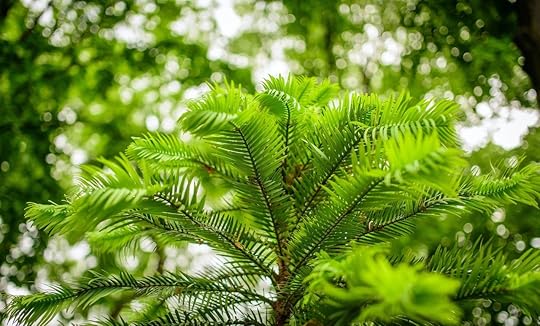
The Australian wombats have been grabbing headlines for saving fellow wild critters during the bushfires, but they’re not the only heroes that have emerged during this disaster. Firefighters succeeded in their efforts to protect the world’s only grove of Wollemi pines, a prehistoric species of tree “that has outlived the dinosaurs,” according to NPR. Only 200 of these trees still exist in their natural environment, all of which are inside the canyons of Wollemi National Park west of Sydney.
They were believed to be extinct until 1994, when Australian national parks officer Davi Noble rappelled into the canyon and discovered the trees. Now they’re in immense danger from the bushfires burning around the park, and firefighters have stepped up to preserve the ancient trees.
To this end, air tankers dropped fire retardant around the trees, firefighters set up an irrigation system to keep the trees wet, and teams of specialists descended from helicopters to ensure that everything was proceeding accordingly.
Although the blaze did char a few trees, and managed to kill two, the Wollemi largely emerged unscathed thanks to the firefighters’ efforts. The government places such a high value on the trees’ safety that it’s even keeping the exact location of the Wollemi grove a secret, to avoid tourism-inflicted damage. 

More like this: The 7 coolest tree tunnels around the world
The post Firefighters save world’s only grove of prehistoric Wollemi pines from Australia fires appeared first on Matador Network.

Hikers killing kauri trees

Park rangers in Auckland, New Zealand, are attempting to save the native kauri tree from extinction, but their efforts are being thwarted by local hikers. The trees are suffering from a deadly fungal disease called kauri dieback — which can spread by the transmission of soil from hikers’ boots — and in an effort to preserve them, hiking trails in regional parks around Auckland have been closed. Keeping tourists out, however, has proven difficult.
Over 10 days around Christmas, authorities found 14 people in prohibited areas. The worst offenders were banned from the parks for up to two years. Perhaps the most distressing part is that the trespassers aren’t acting in ignorance, but defiance.
As reported by The Guardian, Rachel Kelleher, regional park manager for Auckland Council, said, “The types of things we’ve heard is that they understand the issue but believe that they are able to manage themselves appropriately. Because they feel they can manage themselves appropriately, they believe they’ve got a different entitlement to others.”
The battle against kauri dieback will be an uphill one, as the sheer scale of the problem seems insurmountable. The Waitakere Ranges area has almost 40,000 acres of regional park with over 120 miles of trails.
While hiker presence in affected areas has decreased since awareness of the disease became public, prohibitive fences are still being removed, ignored, or vandalized. The disease is so devastating and contagious, one hiker could potentially contaminate an entire forest accidentally.
So if you’re planning to hike in the Auckland region anytime soon, do everyone a favor and don’t ignore the barriers. They’re there for a reason. 

More like this: The 7 coolest tree tunnels around the world
The post Defiant hikers are killing New Zealand’s treasured kauri trees appeared first on Matador Network.

Matador Network's Blog
- Matador Network's profile
- 6 followers



